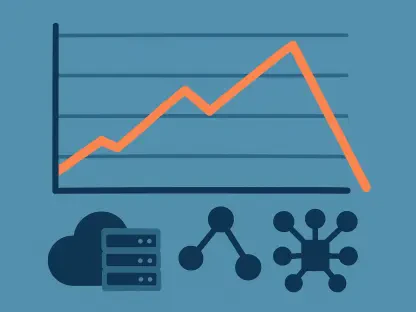Investors are always on the lookout for burgeoning markets with promising growth trends and significant potential for expansion. The Product Life Cycle Management (PLM) Software Market presents one such lucrative opportunity. This market has shown consistent growth and is ripe for further development, making it an appealing arena for investors. So, what makes the PLM Software Market so attractive? Let’s delve into the intricacies of this sector.
Understanding the PLM Software Market
What is PLM Software?
Product Life Cycle Management (PLM) software is designed to manage the entire lifecycle of a product, from inception through engineering design and manufacturing, to service and disposal. This software integrates people, data, processes, and business systems, providing a product information backbone for companies and their extended enterprises.
Key players in the PLM Software Market include industry giants like Dassault Systems, Autodesk Inc., PTC Inc., and Siemens. These companies continuously innovate to enhance the functionality and reach of their PLM solutions, making this market highly dynamic and competitive. As the complexity of products increases and global supply chains become more intricate, the demand for robust PLM solutions is expected to rise. These systems not only streamline operations but also facilitate better decision-making and collaboration across different departments and stakeholders.
Market Growth and Potential
The PLM Software Market has demonstrated consistent growth in recent years. This positive momentum is expected to continue, driven by technological advancements and expanding market needs. Despite this growth, the market remains relatively underdeveloped, offering substantial opportunities for early entrants. There are several underserved segments and unexplored regions that are ripe for business expansion. Companies investing in these areas can establish a strong market presence and gain a competitive advantage. Early entry into these markets can lead to significant gains as they mature.
Projections indicate that industries such as automotive, aerospace, and consumer goods will heavily invest in PLM software to enhance their product development cycles. Developing countries with emerging industrial sectors are also becoming focal points for PLM software adoption. Companies that seize these opportunities early stand to benefit from establishing a loyal customer base and leveraging first-mover advantages. Thus, the PLM Software Market is not just expanding but evolving, offering a fertile ground for investors looking to diversify their portfolios.
Drivers of Market Success
Technological Advancements
Innovation is a cornerstone of the PLM Software Market. Continuous integration of new technologies enhances operational efficiencies and expands product offerings. Recent advancements include AI and machine learning, which are set to revolutionize how products are designed, manufactured, and managed. Investment in cutting-edge technologies enables companies to stay ahead of the competition and capitalize on emerging opportunities. Those who prioritize innovation are likely to secure more substantial and sustainable growth.
The incorporation of AI and machine learning can automate many aspects of product lifecycle management, from predictive maintenance to smart manufacturing processes. This not only reduces costs but also speeds up time-to-market. Additionally, the integration of IoT allows for more sophisticated tracking and management of products throughout their lifecycle, providing companies with valuable data that can be used for continuous improvement. As technological barriers are lowered, even small and medium-sized enterprises find it easier to adopt PLM solutions, thereby expanding the market further.
Favorable Regulatory Environment
Supportive government policies and initiatives play a crucial role in fostering growth in the PLM sector. These favorable conditions reduce entry barriers, making it easier for companies to invest and expand in the market. Regulatory support is pivotal in creating a stable and advantageous environment for long-term investment success. This supportive framework not only facilitates market entry but also sustains growth by encouraging continuous innovation and development within the sector.
Governments worldwide are recognizing the importance of digital transformation and are thus promoting policies that encourage the adoption of advanced PLM systems. Tax incentives, grants, and subsidies are often provided to companies investing in cutting-edge technologies. These regulatory measures not only encourage local firms to upgrade their PLM capabilities but also attract foreign investments, thereby boosting the overall market. As more countries implement such favorable policies, the global PLM Software Market is poised for significant growth, underscoring its potential as a lucrative investment opportunity.
Expanding Market Reach
Growing Consumer Base
The consumer base for PLM software is expanding, both domestically and internationally. This growth presents ample opportunities for companies to target new customer groups, diversify their revenue streams, and enhance brand visibility. As more industries recognize the value of PLM software, the demand continues to rise. This expanding consumer base is a compelling reason for investors to consider the PLM Software Market.
Industries that traditionally did not employ PLM solutions are now beginning to see their benefits. Sectors like healthcare, fashion, and retail are increasingly adopting PLM software to streamline processes and enhance product quality. Educational institutions and research organizations also find value in PLM systems for managing complex projects. This broadening of the consumer base means that companies can now tap into previously unexplored markets, thereby increasing their revenue streams and reducing dependency on a single sector. Thus, the PLM Software Market offers a diversified investment opportunity that can withstand market volatility.
Global Opportunities
The PLM Software Market offers extensive global opportunities. With increasing international market interconnectedness, companies in this sector can access a broader customer base. This global reach mitigates the risks associated with local market dependencies and provides a more diversified revenue stream. Expanding into global markets is not just an opportunity but a necessity for companies looking to achieve long-term success and stability.
The Asia-Pacific region, for example, is experiencing rapid industrial growth and is expected to become a major consumer of PLM solutions. Similarly, the European market is also seeing increased adoption of PLM software, driven by stringent regulatory requirements and a focus on sustainable practices. By expanding their global footprint, companies can capitalize on these regional growth trends. Moreover, diversification across various geographical markets ensures that companies are less vulnerable to economic downturns in any single region, making the PLM Software Market a resilient investment option.
Strategic Advantages of Early Market Entry
Competitive Positioning
Early entry into underdeveloped segments and regions allows companies to establish a strong competitive position. This early market presence can lead to significant market share as these segments mature and develop. Investors who recognize and act on these opportunities are likely to see substantial returns as early market entrants often set the industry standards and benefit from early adoption.
Being an early entrant allows companies to influence customer preferences and shape market dynamics. They can establish key partnerships and secure prime resources that latecomers may find difficult to access. These advantages are particularly pronounced in regions where PLM adoption is still in its nascent stages. By setting industry standards, early entrants can create entry barriers for future competitors, thereby securing long-term profitability. Thus, the timing of market entry can be as crucial as the decision to invest, making early movers well-positioned to reap significant benefits.
Establishing Market Presence
By entering the market early, companies can build a robust brand presence and loyalty among customers. This strong market presence can act as a barrier to entry for future competitors, further solidifying the company’s position in the market. Early market entry can also facilitate better partnerships and collaborations, enhancing overall market opportunities and growth potential.
Establishing a strong market presence early on also allows companies to gather valuable customer feedback, which can be used to refine and improve their PLM solutions. This continuous improvement cycle ensures that the company remains relevant and competitive over time. Furthermore, a well-established brand can command higher pricing power and customer loyalty, leading to increased profitability. In essence, early market presence acts as a multiplier for future growth, making it a strategic advantage that cannot be overlooked.
The Role of Innovation
Disruptive Technologies
Disruptive innovation is a key driver in the PLM Software Market. Technologies such as AI, machine learning, IoT, and blockchain are transforming how products are managed throughout their lifecycle. Companies that invest in these disruptive technologies can outpace competitors and capitalize on new market opportunities. These innovations not only enhance product offerings but also open up new avenues for operational efficiency and customer engagement.
The adoption of disruptive technologies is not just about keeping up with market trends but about redefining industry standards. For instance, blockchain can offer unparalleled transparency and security in supply chain management, while IoT can provide real-time data analytics for better decision-making. These technologies can fundamentally change how companies operate, offering them a competitive edge that is hard to replicate. Therefore, continuous investment in disruptive technologies is crucial for companies aiming to remain at the forefront of the PLM Software Market.
Staying Competitive
To remain competitive in the PLM Software Market, continuous innovation is essential. Companies must invest in research and development to stay ahead of market trends and customer expectations. Those that neglect innovation risk falling behind as more forward-thinking competitors capture market share. Therefore, a focus on sustained innovation is critical for long-term success in the PLM Software Market.
Innovation should not be limited to technological advancements but should also encompass business models, customer engagement strategies, and operational processes. Companies that foster a culture of innovation are better equipped to adapt to market changes and exploit new opportunities. This adaptability ensures that they not only survive but thrive in a highly competitive market. Investors looking for long-term gains should thus prioritize companies with a strong commitment to continuous innovation, as these are the ones most likely to offer sustainable growth.
Conclusion
Investors are always seeking burgeoning markets with strong growth trends and significant potential for expansion. One market that has captured their attention is the Product Life Cycle Management (PLM) Software Market. This sector has exhibited steady growth, making it a fertile ground for further development and an appealing choice for savvy investors.
So, why exactly is the PLM Software Market so attractive? First, the increasing emphasis on efficiency and productivity in various industries has driven demand for robust PLM solutions. These systems help companies manage a product’s lifecycle from inception to disposal, streamlining processes and cutting costs. Furthermore, advancements in technology such as AI and cloud computing have revolutionized PLM software, making them more capable and adaptable. Industries like automotive, aerospace, and consumer goods increasingly rely on PLM systems to outpace competitors.
Another factor enhancing this market’s appeal is its resilience. As industries continually evolve, so will the demand for efficient product lifecycle management. The consistent growth and future potential make the PLM Software Market an especially promising opportunity for investors looking to diversify their portfolios.









